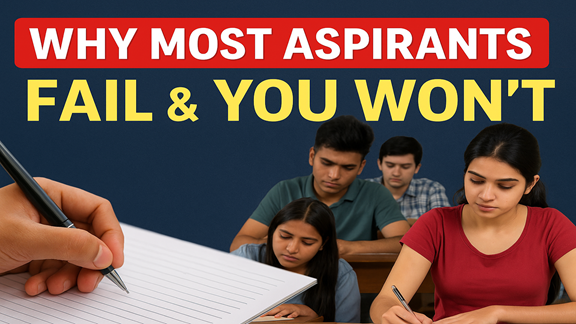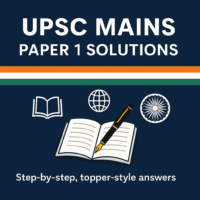QUALITY OF SERVICE DELIVERY
QUALITY OF SERVICE DELIVERY
Witty way to define quality of service delivery, you decide whether to put it in the beginning or elsewhere
Quality of Service Delivery in the Indian Government System
Imagine if the Indian government service delivery system were like ordering food at a quirky, somewhat dystopian restaurant. Here’s a look at various aspects of this system, illustrated with a pinch of dark humor.
- Waiting Times: The Never-Ending Queue
You walk into “Bureaucratic Bites” and order a simple dish—a new passport. The waiter (the government official) nods and tells you it’ll be ready in 30 days. Fast forward six months, and you’re still staring at the kitchen door, wondering if your order got lost in the abyss.
- “Your passport application is in the process” is the bureaucratic equivalent of “Your food will be out shortly” in a restaurant where time moves slower than a snail on vacation.
- Efficiency: The Kafkaesque Labyrinth
You need to get a birth certificate. You’re directed to five different counters, each asking for a form from the other. You start to wonder if you’ve accidentally entered a scavenger hunt rather than a government office.
- Getting a birth certificate feels like starring in an endless loop of a Kafka novel, where each counter is manned by a character who might as well be named “Not My Department.”
- Transparency: The Mystical Quest for Information
You file an RTI request to find out why the potholes in your street haven’t been fixed. The reply comes back with so much redaction and jargon that you consider hiring a cryptographer to decode it.
- Seeking transparency from a government office is like trying to solve a riddle wrapped in an enigma served with a side of bureaucratic babble. The clarity of the information you receive is directly proportional to the opacity of the original problem.
- Customer Service: The Unreachable Helpline
You call the government helpline for assistance with your tax return. After navigating a labyrinthine phone menu, you finally get through—only to be told the system is down and to “please call back later.”
- Government helplines are like a haunted house – full of twists and turns, and if you ever manage to speak to a real person, it feels like encountering a ghost—fleeting and unlikely to solve your problem.
- Accountability: The Blame Game Olympics
A project funded by government grants runs significantly over budget. When you ask who’s responsible, you’re given a response that involves blaming everyone from the previous administration to the janitor who cleaned the office last week.
- Accountability in the government service delivery system is like a game of hot potato where no one wants to be caught holding the blame. It’s an Olympic sport in passing the buck, with gold medals awarded for creative deflection.
- Grievance Redressal: The Black Hole
You file a grievance about a delayed pension. Months pass, and your complaint seems to have been sucked into a black hole, never to be seen again.
- Filing a grievance with the government is akin to tossing a message in a bottle into the ocean. You might hope for a resolution, but deep down, you know it’s probably floating in the vast expanse of bureaucratic limbo.
- Service Quality: The Lottery of Luck
You need a simple service, like getting a property registered. One person you know had it done in a week; another has been waiting for a year. It’s a roll of the dice.
- Getting government services is like playing a lottery where the only prize is basic efficiency, and winning is so rare it feels like hitting the jackpot when it happens.
Conclusion
In this darkly humorous depiction, the quality of service delivery in the Indian government system can sometimes feel like navigating an elaborate, surreal maze with its fair share of frustrations and absurdities. While there are certainly competent and dedicated public servants striving to improve the system, the experience often leaves citizens feeling like they’re part of a satirical comedy.
Quality of service delivery
Quality of service delivery in public departments refers to the effectiveness, efficiency, and responsiveness with which government services are provided to citizens. It encompasses the overall experience of the service recipients, including timeliness, accessibility, transparency, reliability, and the fairness of the services rendered. High-quality service delivery is essential for maintaining public trust and ensuring that citizens’ needs are met in a satisfactory manner.
For example – India’s Aadhaar Program
The Aadhaar program provides a unique identification number to every Indian resident, enabling them to access a wide range of government services efficiently.
It has streamlined service delivery, reduced fraud, and made it easier for citizens to access welfare programs and services.
Key Components of Quality Service Delivery in Public Departments
- Efficiency and Effectiveness
Efficiency refers to delivering services in a timely and cost-effective manner, while effectiveness pertains to the extent to which services meet the intended outcomes and satisfy public needs.
Example: A public health department that efficiently administers vaccines to a large population during a pandemic, ensuring both quick distribution and high vaccination rates.
- Timeliness
Timeliness involves providing services within a reasonable and expected timeframe, minimizing delays that could impact service effectiveness.
Example: A government office processing passport applications within the stipulated timeframe, ensuring citizens receive their documents promptly.
- Accessibility
Accessibility ensures that services are available to all segments of the population, including marginalized and disadvantaged groups, without undue barriers.
Example: Providing government forms and services in multiple languages and formats to cater to diverse populations, including those with disabilities.
- Transparency and Accountability
Transparency involves clear communication about processes, decisions, and service standards, while accountability refers to the obligation of public servants to account for their actions and decisions.
Example: A municipal government that provides online access to budget reports and service performance metrics, allowing citizens to see how resources are allocated and used.
- Reliability and Consistency
Reliability means that services are dependable and provided consistently over time, without unexpected interruptions or variations in quality.
Example: A public transportation system that consistently adheres to its schedule and provides safe, reliable service to commuters.
- Fairness and Equity
Fairness involves treating all citizens equally and ensuring that services are delivered impartially, without discrimination or bias.
Example: A public benefits program that is administered based on clear eligibility criteria, ensuring that all qualified applicants receive assistance without favoritism.
- Customer Satisfaction
Customer satisfaction reflects how well the services meet or exceed the expectations of the citizens who use them.
Example: A government service center that regularly surveys citizens to gather feedback on service quality and makes improvements based on that feedback.
- Innovation and Adaptability
Innovation involves adopting new technologies and practices to improve service delivery, while adaptability refers to the ability to adjust services in response to changing needs and circumstances.
Example: Implementing an online portal for tax payments that simplifies the process and reduces the need for in-person visits to government offices.
Let’s think: Think of 3 significant things that you expect when the government delivers any service to you.
Predicaments in Quality Service Delivery
Providing quality service in Indian government departments faces several predicaments, many of which are deeply rooted in systemic, structural, and cultural issues. Here are some of the major challenges:
- Bureaucratic Red Tape
Predicament: The extensive and often convoluted administrative procedures, also known as red tape, create delays and inefficiencies. This involves excessive paperwork, complex regulations, and numerous approvals for simple tasks.
Example: Applying for a business license may require approvals from multiple departments, each with its own set of requirements and timelines, leading to significant delays.
- Corruption and Lack of Accountability
Predicament: Corruption at various levels hampers service delivery. Officials may demand bribes for expedited services or provide preferential treatment, undermining fairness and efficiency.
Example: Citizens often report having to pay extra “facilitation fees” to get basic services like a driving license or land registration completed in a timely manner.
- Resource Constraints
Predicament: Many government departments are underfunded and understaffed, leading to inadequate service provision. Limited financial and human resources restrict the ability to meet service standards and respond promptly to citizens’ needs.
Example: Public hospitals often face shortages of medical staff, equipment, and medicines, compromising the quality of healthcare services provided to patients.
- Inadequate Training and Capacity Building
Predicament: Public officials often lack the necessary training and skills to effectively manage and deliver services. Continuous professional development is rare, and many officials are not equipped to handle modern administrative challenges.
Example: Frontline workers in municipal offices may not be trained in customer service or modern management practices, leading to inefficiencies and poor citizen interactions.
- Lack of Transparency
Predicament: Opaque processes and lack of access to information make it difficult for citizens to understand how services are delivered and to hold officials accountable for delays and inefficiencies.
Example: The absence of clear guidelines on how to apply for government schemes or the lack of transparency in the selection process can lead to confusion and perceived unfairness among citizens.
- Resistance to Change
Predicament: There is often resistance within the bureaucracy to adopt new technologies and processes that can improve efficiency and service delivery. This resistance can stem from a fear of change, lack of incentives, or a comfort with the status quo.
Example: Implementation of e-governance initiatives, such as online portals for services, can be slow due to resistance from officials who are used to traditional methods of working.
- Political Interference
Predicament: Political considerations can influence the functioning of government departments, leading to decisions that prioritize political gains over public service quality. This can result in the misallocation of resources and biased service delivery.
Example: Transfers and postings of key officials based on political affiliations rather than merit can disrupt continuity and efficiency in service delivery.
- Inconsistent Implementation of Policies
Predicament: Policies and schemes designed to improve service delivery often face inconsistent implementation across different regions and departments. This can be due to varying levels of commitment, resources, and local administrative capacity.
Example: The rollout of national health schemes can vary widely between states, with some regions experiencing better service delivery than others due to differences in local governance and infrastructure.
- Lack of Citizen Engagement
Predicament: Insufficient mechanisms for citizen feedback and participation in decision-making processes can lead to services that do not align with the actual needs and preferences of the public.
Example: Urban planning decisions made without adequate public consultation may result in infrastructure projects that are not user-friendly or do not address the real needs of the community.
- Poor Grievance Redressal Systems
Predicament: Ineffective grievance redressal mechanisms mean that citizens’ complaints and concerns are not adequately addressed, leading to dissatisfaction and lack of trust in government services.
Example: Complaints about delays or inefficiencies in public distribution systems (PDS) may go unresolved for long periods, leaving beneficiaries without access to essential supplies.
Conclusion
Addressing these predicaments requires a multifaceted approach, including administrative reforms, increased transparency, better resource allocation, capacity building, and stronger mechanisms for accountability and citizen engagement. By tackling these challenges, the Indian government can significantly improve the quality of service delivery and enhance public trust in its institutions.
Food for thought– in a box space to write answer
Mention one incidence from your personal life when you experienced quality in public service delivery and one incidence when quality was lacking.
Delivering the Quality Service by government departments
Improving the quality of services in government departments requires a multifaceted approach that addresses the systemic, procedural, and human resource-related challenges. Here are several strategies and examples of how quality services can be delivered:
- Adoption of E-Governance
Strategy: Implementing e-governance initiatives to streamline processes, reduce red tape, and make services more accessible to citizens.
Example: The Passport Seva Project by the Ministry of External Affairs in India is a prime example of successful e-governance. This project digitized the passport application process, significantly reducing the time required for issuing passports. The online system allows citizens to fill out application forms, schedule appointments, and track the status of their applications, making the process more transparent and efficient.
- Capacity Building and Training
Strategy: Regular training programs for government employees to improve their skills and understanding of modern administrative practices and customer service.
Example: The National Training Policy mandates training for all government officials at various stages of their careers. For instance, the Lal Bahadur Shastri National Academy of Administration (LBSNAA) provides comprehensive training to IAS officers and other Civil Servants, focusing on ethics, public administration, and the use of technology in governance. Continuous professional development helps ensure that officials are equipped to deliver high-quality services.
- Clear Service Standards and Citizen Charters
Strategy: Developing and strictly adhering to citizen charters that clearly outline the standards of service delivery, expected timelines, and grievance redressal mechanisms.
Example: The Department of Posts has a Citizen Charter that specifies the expected delivery times for various mail services and provides detailed information on how to lodge complaints. This transparency helps manage citizen expectations and holds the department accountable for timely and effective service delivery.
- Decentralization and Empowerment of Local Bodies
Strategy: Empowering local government bodies with adequate resources and decision-making authority to address local issues more effectively.
Example: The Panchayati Raj system in India decentralizes governance by empowering local village councils (Panchayats) to make decisions on community development projects, local infrastructure, and welfare schemes. This local governance model enables quicker and more contextually appropriate responses to the needs of rural populations.
- Enhanced Grievance Redressal Mechanisms
Strategy: Establishing robust grievance redressal systems that are easily accessible and ensure timely resolution of complaints.
Example: The Centralized Public Grievance Redress and Monitoring System (CPGRAMS) allows citizens to lodge grievances online, which are then directed to the relevant department for resolution. The system tracks the status of each complaint and ensures accountability by monitoring the time taken for resolution.
- Transparency and Proactive Disclosure
Strategy: Ensuring transparency in government operations by proactively disclosing information and making it accessible to the public.
Example: The Right to Information (RTI) Act, 2005, mandates public authorities to proactively disclose a wide range of information related to their functions and operations. For example, the Ministry of Finance publishes detailed budget documents and expenditure reports on its website, enabling citizens to scrutinize how public funds are being utilized.
- Use of Technology and Data Analytics
Strategy: Leveraging technology and data analytics to improve service delivery, monitor performance, and identify areas for improvement.
Example: The Pradhan Mantri Jan Dhan Yojana (PMJDY) uses data analytics to monitor the opening of bank accounts and the distribution of financial services to unbanked populations. The use of technology has streamlined the process, reduced corruption, and ensured that benefits reach the intended beneficiaries more efficiently.
- Public Participation and Feedback Mechanisms
Strategy: Encouraging public participation in governance and using citizen feedback to improve services.
Example: The MyGov platform allows citizens to participate in discussions, submit ideas, and provide feedback on government policies and initiatives. For instance, during the drafting of the National Education Policy, the government solicited input from educators, students, and parents through MyGov, ensuring that the policy reflected the needs and aspirations of stakeholders.
- Performance Monitoring and Accountability
Strategy: Establishing performance metrics and regular monitoring to ensure that public servants meet service delivery standards.
Example: The Performance Management Division (PMD) under the Cabinet Secretariat evaluates the performance of various government departments against pre-defined objectives and targets. Regular performance reviews help identify inefficiencies and areas for improvement, fostering a culture of accountability.
- Public-Private Partnerships (PPPs)
Strategy: Engaging with private sector partners to leverage their expertise and resources in delivering public services.
Example: The Delhi Metro Rail Corporation (DMRC), a joint venture between the Government of India and the Government of Delhi, has successfully partnered with private companies for the construction, operation, and maintenance of the metro system. This collaboration has resulted in a highly efficient and reliable public transportation system.
Conclusion
Improving the quality of service delivery in Indian government departments requires a comprehensive approach that addresses systemic challenges, leverages technology, and fosters a culture of accountability and citizen-centric governance. By implementing these strategies and learning from successful examples, government departments can enhance their efficiency, transparency, and responsiveness, ultimately leading to better outcomes for citizens.
Food for thought: Think of 3 ways to improve public service delivery in india?
The Sevottam Model: Enhancing Public Service Delivery in India
Diagram of Sevottam model
The Sevottam Model is an integrated framework developed by the Government of India to improve the quality of public service delivery. The term “Sevottam” is derived from two Hindi words: “Seva” (service) and “Uttam” (excellent), translating to “Excellence in Service.” The model aims to create a citizen-centric approach to public administration by ensuring transparency, accountability, and responsiveness in government services.
Key Components of the Sevottam Model
The Sevottam Model consists of three primary modules:
- Citizen Charter:
- Purpose: To clearly define the standards of service delivery that citizens can expect from a government department.
- Components: This includes specifying the types of services provided, timelines for service delivery, and the responsibilities of both the service provider and the citizens.
- Example: A Citizen Charter for the Passport Office might include commitments on processing times for different types of passport applications, such as issuing a new passport within 30 days and providing a mechanism for citizens to track the status of their applications online.
- Public Grievance Redressal Mechanism:
- Purpose: To establish a transparent, accessible, and efficient system for addressing citizen complaints and grievances related to public services.
- Components: This involves setting up channels for lodging complaints (e.g., online portals, helplines, and in-person offices), clear timelines for grievance resolution, and regular monitoring of the grievance redressal process.
- Example: The Centralized Public Grievance Redress and Monitoring System (CPGRAMS) allows citizens to file complaints online regarding any government service. The system ensures that complaints are addressed within a specified timeframe, and the status of the complaint can be tracked by the complainant.
- Service Delivery Capacity Building:
- Purpose: To enhance the capacity of government departments to deliver services efficiently and effectively.
- Components: This includes training programs for employees, improving infrastructure, adopting modern technology, and regularly monitoring and evaluating service delivery performance.
- Example: Regular training sessions for government employees on customer service, use of technology in service delivery, and updated guidelines on best practices can improve the overall efficiency and effectiveness of public services.
How the Sevottam Model Can Help in Providing Better Services
- Citizen-Centric Approach:
- The Sevottam Model places citizens at the centre of public service delivery. By clearly defining service standards through Citizen Charters, citizens know what to expect and can hold service providers accountable.
- Enhanced Transparency and Accountability:
- The model promotes transparency by making information about service delivery standards and grievance redressal mechanisms publicly available. This transparency builds trust between citizens and the government.
- Accountability is ensured through clear timelines for service delivery and grievance redressal, making it easier to identify and address lapses in service.
- Efficient Grievance Redressal:
- A robust grievance redressal mechanism ensures that citizen complaints are addressed promptly and effectively. This not only resolves individual issues but also highlights systemic problems that need to be addressed to improve overall service quality.
- Improved Service Delivery Capacity:
- By focusing on capacity building, the Sevottam Model ensures that government departments have the necessary resources, skills, and infrastructure to meet the defined service standards.
- Continuous training and the adoption of modern technology help streamline processes and reduce the time taken to deliver services.
- Regular Monitoring and Evaluation:
- The model includes mechanisms for regular monitoring and evaluation of service delivery performance. This helps identify areas for improvement and implement corrective measures in a timely manner.
- Performance metrics and feedback loops ensure that the quality of services is continuously assessed and enhanced.
- Inclusive and Participatory Governance:
- The Sevottam Model encourages citizen participation in the governance process. By involving citizens in defining service standards and monitoring service delivery, the model ensures that public services are more aligned with the needs and expectations of the community.
Example of Sevottam Model in Action: The Income Tax Department
The Income Tax Department of India has implemented the Sevottam Model to improve its service delivery:
- Citizen Charter:
- The department’s Citizen Charter outlines the commitments for processing tax returns, issuing refunds, and addressing taxpayer queries. For instance, it commits to processing e-filed returns within 60 days.
- Grievance Redressal Mechanism:
- The Aayakar Seva Kendra (ASK) centers act as single-window systems for taxpayer services, where grievances can be lodged and resolved. The e-Nivaran platform provides an online mechanism for addressing grievances, ensuring transparency and efficiency.
- Service Delivery Capacity Building:
- The department has invested in IT infrastructure, such as the Centralized Processing Center (CPC) in Bengaluru, to handle tax return processing efficiently. Regular training programs for employees ensure they are equipped to handle taxpayer issues effectively.
By implementing the Sevottam Model, the Income Tax Department has significantly improved its service delivery, resulting in higher taxpayer satisfaction and better compliance.
Conclusion
The Sevottam Model provides a structured framework for enhancing the quality of public service delivery in India. By focusing on citizen charters, efficient grievance redressal mechanisms, and capacity building, the model ensures that government services are transparent, accountable, and responsive to citizen needs. The successful implementation of the Sevottam Model can lead to a more citizen-centric approach to governance, fostering greater trust and satisfaction among the public.
Practice Question: “Sevottam Model can enhance the quality of service delivery”. Comment.
Attributes required in a Civil Servant for better Service Delivery
In addition to the attributes emphasized by the Sevottam Model—such as transparency, accountability, and efficiency—two more crucial attributes for public service are equity and integrity. These attributes are vital for ensuring that public services are fair, inclusive, and trustworthy, ultimately enhancing the overall effectiveness and credibility of government operations.
- Equity
Justification:
- Inclusiveness: Equity ensures that all citizens, regardless of their socioeconomic status, gender, ethnicity, or geographical location, have equal access to public services. This inclusiveness is essential for a just society where everyone has the opportunity to benefit from government programs and services.
- Social Justice: Equity addresses historical and systemic inequalities by providing additional support to marginalized and disadvantaged groups. This focus on social justice helps bridge the gap between different sections of society, promoting overall social cohesion and stability.
- Balanced Development: By ensuring that resources and services are distributed fairly, equity promotes balanced regional and sectoral development. This prevents the concentration of benefits in specific areas or among certain groups, fostering more harmonious and sustainable growth.
Example:
- The Pradhan Mantri Jan Dhan Yojana (PMJDY) aims to provide banking facilities to the unbanked population, particularly in rural and remote areas. By promoting financial inclusion, the scheme ensures that marginalized communities have access to banking services, credit facilities, and government benefits, thereby enhancing equity in financial services.
- Integrity
Justification:
- Trust and Credibility: Integrity in public service builds trust and credibility among citizens. When public officials act with honesty, transparency, and ethical conduct, it fosters public confidence in government institutions and their ability to serve the public good.
- Corruption Prevention: Integrity is a cornerstone of anti-corruption efforts. Public servants who adhere to high ethical standards are less likely to engage in corrupt practices, thereby reducing the incidence of corruption and its negative impact on public services.
- Efficient Use of Resources: Integrity ensures that public resources are used efficiently and for their intended purposes. This ethical management of resources prevents wastage, fraud, and abuse, leading to better service delivery and value for taxpayers’ money.
Example:
- The Central Vigilance Commission (CVC) in India promotes integrity in public administration by overseeing and guiding anti-corruption measures. The CVC conducts vigilance awareness campaigns, sets guidelines for ethical conduct in public offices, and investigates corruption cases, thereby ensuring that public servants adhere to high standards of integrity.
Conclusion
Equity and integrity are essential attributes for public service that complement the existing focus on transparency, accountability, and efficiency. Equity ensures that all citizens have fair access to public services, addressing systemic inequalities and promoting inclusive development. Integrity fosters trust, prevents corruption, and ensures the ethical use of public resources, enhancing the credibility and effectiveness of government operations. By prioritizing these attributes, public service can better serve the needs of all citizens and contribute to a more just and trustworthy governance system.
A relation between Public Service and Other Attributes (Definition, Context and Example in tabular form)
- a) Integrity
Definition: Integrity in public service refers to the adherence to moral and ethical principles, ensuring honesty, transparency, and consistency in actions, decisions, and behavior.
Context in Public Service:
- Trust and Credibility: Public servants with integrity build trust among citizens and maintain the credibility of government institutions.
- Ethical Decision-Making: It involves making decisions based on fairness, justice, and the public good, rather than personal gain.
- Anti-Corruption: Integrity is essential in preventing corruption and ensuring that public resources are used effectively and ethically.
Example: A public official who refuses to accept bribes and consistently acts in the public’s best interest, even when facing pressure to do otherwise, exemplifies integrity.
- b) Perseverance
Definition: Perseverance refers to the steadfastness and determination to overcome challenges and persist in efforts despite difficulties and setbacks.
Context in Public Service:
- Problem-Solving: Public servants often face complex issues that require sustained effort and persistence to resolve.
- Continuous Improvement: Perseverance is key to driving long-term projects and initiatives aimed at improving public services.
- Resilience: It helps public servants remain committed to their duties even in the face of bureaucratic hurdles and resource constraints.
Example: An officer working tirelessly to implement a rural development program in a remote area, despite logistical challenges and limited resources, demonstrates perseverance.
- c) Spirit of Service
Definition: The spirit of service refers to a genuine desire and commitment to serve the public and contribute to the welfare of society.
Context in Public Service:
- Public Interest: Public servants with a strong spirit of service prioritize the needs and interests of the community over personal benefits.
- Dedication: It involves going above and beyond the call of duty to ensure that public services are delivered efficiently and effectively.
- Empathy: The spirit of service includes empathy and understanding towards the challenges and needs of citizens.
Example: A teacher who voluntarily organizes extra classes for underprivileged students to help them succeed academically exhibits a strong spirit of service.
- d) Commitment
Definition: Commitment in public service means the dedication and loyalty to one’s duties and responsibilities, ensuring consistent and reliable performance.
Context in Public Service:
- Reliability: Committed public servants are dependable and consistently meet their obligations and responsibilities.
- Professionalism: It reflects a high level of professionalism and dedication to achieving the goals and objectives of public service.
- Long-Term Vision: Commitment includes working towards long-term goals and improvements in public services.
Example: A health worker who remains dedicated to immunizing children in a village despite facing personal risks and challenges exemplifies commitment.
- e) Courage of Conviction
Definition: Courage of conviction refers to the strength to stand up for one’s beliefs and principles, even in the face of opposition or adversity.
Context in Public Service:
- Ethical Integrity: Public servants with courage of conviction uphold ethical standards and make decisions based on what is right, not what is easy or popular.
- Advocacy: It involves advocating for policies and actions that benefit the public, even if they are controversial or met with resistance.
- Resilience: Having the resilience to maintain one’s stance and act according to one’s principles under pressure.
Example: A whistleblower who exposes corruption within their department, despite the potential personal and professional risks, demonstrates the courage of conviction.
- f) Personal Opinion
Definition: Personal opinion refers to an individual’s own thoughts, beliefs, and perspectives that are separate from official positions or organizational policies.
Context in Public Service:
- Diverse Perspectives: Public servants bring their own experiences and viewpoints to their roles, which can contribute to more well-rounded and inclusive decision-making.
- Discretion and Judgment: While personal opinions can inform decisions, public servants must balance these with official policies and the public interest.
- Transparency: Clear communication about when a statement is a personal opinion versus an official stance is important to maintain transparency and trust.
Example: A government official may personally believe in more progressive environmental policies and advocate for them, but they must implement current laws and regulations until changes are officially made.
Conclusion
Understanding and embodying these attributes and principles is crucial for public servants to effectively serve the public and maintain the integrity, trust, and efficiency of public service. These qualities help create a governance system that is responsive, ethical, and dedicated to the welfare of society.














